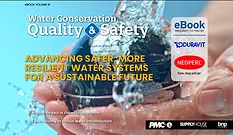

Water Treatment
Your resource for the latest news and trends in water quality and water treatment systems.
Articles
More ArticlesPodcasts
More PodcastsKeep your content unclogged with our newsletters!
Stay in the know on the latest plumbing & piping industry trends.
JOIN TODAY!Copyright ©2025. All Rights Reserved BNP Media.
Design, CMS, Hosting & Web Development :: ePublishing





